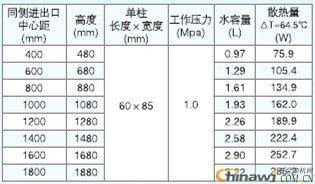Proper Installation of Steel Radiators
Steel radiators should be installed with care and precision to ensure optimal performance and longevity. Here is a step-by-step guide to help you through the installation process: 1. Begin by opening the packaging of your steel column radiator. Before anything else, install the bleed valve and the union fittings. This ensures that air can be released properly during operation. 2. When installing the radiator, take into account the thermal expansion and contraction of the heating pipes. This will help prevent damage to the radiator over time due to temperature changes. 3. Refer to the installation drawing or specifications provided by our company to mark the positions for the special wall hooks. Accurate placement is essential for secure mounting. 4. Use an electric drill to create 12 holes in the wall. The depth of each hole should be sufficient to accommodate the expansion tubes, and the outer edge of the tube should align with the surface of the wall. 5. Insert the expansion tubes into the drilled holes. Make sure they are securely placed and ready for the next steps. 6. Attach the bottom hook to the wall using screws. Tighten them as needed to ensure stability. 7. Place the steel ellipsoidal radiator onto the installed bottom hook. Then, install the upper hook and adjust its position as required. Once everything is aligned, tighten the clamps and secure the expansion screws. Be sure to position the bleed valve at the top for easy access. 8. Connect the pipe joints and install the pipes according to the provided drawings. Ensure the connections are tight and properly aligned with the inlet and outlet ports. The back of the radiator should be approximately 3.5 cm away from the wall, and at least 5 cm from the corner line. 9. After installation, fill the system with hot water. Open the bleed valve and allow air to escape until water begins to flow out. This ensures the system is fully filled and free of air pockets. 10. While the radiator is in operation, make sure the working pressure does not exceed 0.12 MPa, as specified in the user manual. Exceeding this limit could cause damage. 11. The oxygen content in the heat transfer fluid should not exceed 0.05 grams per square meter. High oxygen levels can lead to corrosion inside the radiator. 12. The water used for the radiator must meet specific pH requirements. The internal anti-corrosion system should maintain a pH level of up to 12, while the medium water should have a pH of no more than 9. Proper installation and maintenance will ensure your steel radiators operate efficiently and last for many years. For more information, refer to the official installation guide or contact our support team.

Stainless Steel Precision Machining Components
Stainless Steel Precision Machining Components,Stainless Steel Cnc Machining Parts,Cnc Machining Stainless Steel Parts,High Precision Machining Part
Stand Dragon Industrial Co., Ltd. , https://www.standdragontw.com
